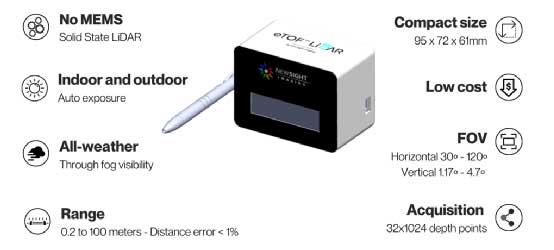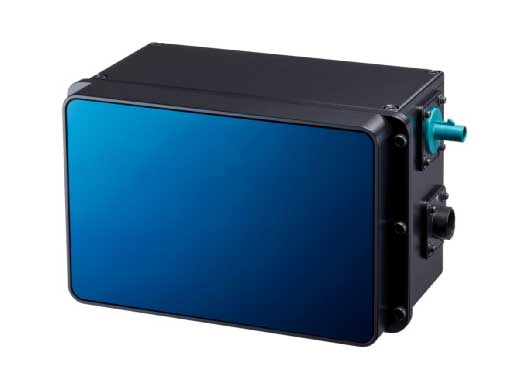CMOS Packaging Solder Paste: The Competition of CMOS Sensors for Lidars
CMOS Packaging Solder Paste: The Competition of CMOS Sensors for Lidars
Solder Paste and Ultra-Fine Solder Manufacturer-Shenzhen Fitech is a comprehensive solder paste supplier integrating production, sales, research, and service of solder paste, epoxy solder paste, and solder powder. Fitech is the leading unit for the formulation of solder powder standards of the Ministry of Industry and Information Technology. Fitech's products include ultra-fine lead-free printing solder paste, ultra-fine lead-free dispensing solder paste, ultra-fine lead-free jetting solder paste, ultra-fine lead-free pin transfer solder paste, no-clean solder paste, water-soluble solder paste, high-temperature solder paste, medium-temperature solder paste, low-temperature solder paste, etc. Fitech can manufacture electronic-grade packaging solder powders with particle sizes from T2-T10.

Introduction
CMOS image sensors arguably bring innovation to modern 3D imaging, even in the nascent lidar market. Flash solid-state lidar consists of many SPADCMOS sensors. Some manufacturers producing consumer image sensors have also entered the lidar market, especially under the premise of increasingly demanding autonomous driving applications.
 NewSight Imaging
NewSight Imaging
ETOF Lidar Reference Design/Newsightimaging
CMOS image sensors arguably bring innovation to modern 3D imaging, even in the nascent lidar market. Flash solid-state lidar consists of many SPADCMOS sensors. Some manufacturers producing consumer image sensors have also entered the lidar market, especially under the premise of increasingly demanding autonomous driving applications.
NewSight Imaging is a semiconductor company established in 2016 that is dedicated to the development of 3DCMOS image sensors. Tower Semiconductor is responsible for the production and manufacture of sensor chips. The NSI1000 released by NewSight Imaging in 2020 is a cost-effective CMOS image sensor chip. It adopts Newsight's unique ETOF (Enhanced TOF) technology and has a 32x1024 pixel array to support 3D depth image capture from far and near. NewSight Imaging also introduced an ETOF solid-state lidar reference design based on the sensor chip, using a pure solid-state solution without MEMS, with a measurement range of 0.2 to 100 meters.
Recently, NewSight Imaging released a new NSI900CMOS image sensor for depth perception and lidar applications. The NSI9000 is a single-chip structure instead of a stack. The chip package size is only 12.7mx12.7mm. The sensor offers 491k (1024x480) pixel resolution with a maximum frame rate of 130. In the information provided by NewSight, this type of image sensor only requires a sample price of 1,800 yen.
Compared with the NSI1000, the NSI9000 not only improves the pixel resolution but also increases the detection distance at full resolution to 200 meters, with an accuracy higher than 1%. Furthermore, the NSI9000 follows a design based on event-driven imaging, using an event-aware feature circuit through which each pixel is connected.
Competing chips were also used as a comparison for public information published by NewSight Imaging, stating that their sensor pixel resolution was 5 times that of the competition, and the price was 15,000 yen cheaper than the competition. The target is the Japanese factory. Through the information comparison, it is not difficult to guess that the competing factory is Sony.

SAC Solder Paste SACS Solder Paste SnBiAg Solder Paste SnBiAgSb Solder Paste SnBiAgX Solder Paste SnBi Solder Paste BiX Solder Paste AuSn Solder Paste SnSb Solder Paste SnPb Solder Paste Anisotropic Conductive Adhesive Ultra-Fine-Pitch Flux

 Sony
SonyAs a large CMOS manufacturer, Sony has also begun to enter the automotive industry in recent years, especially in the field of autonomous driving. After showing off a concept car, Sony finally announced the formation of Sony Mobile at this year's CES 2022 to explore the electric vehicle market. As a key link of pure vision solutions, although Sony's market share in automotive cameras is not high, Sony's CMOS business can create excellent automotive regulatory sensors through years of technology accumulation.
However, Sony seems unsatisfied with the camera and wants to enter the lidar market. Last year, Sony Semiconductor introduced the IMX459 stacked SPAD distance sensor for detecting and identifying DTOF for automotive lidars. The IMX459 packs a 10-square-micron SPAD pixel and a ranging processing circuit on a single chip. It provides 10097x168 effective pixels to achieve high-precision and high-speed distance measurement.

Lidar mechanical sacnner reference design/Sony's IMX459
In the lidar distance measurement scheme, SPAD pixels can be used in the detector of the DTOF sensor to complete the distance measurement by the time difference of the light source reflection. The sensor makes full use of Sony's accumulated CMOS technologies, such as back-illuminated pixel structure, copper interconnects, etc., which are very suitable for solid-state radar with a diagonal length of only 6.25mm. Sony plans to start providing samples in March of this year, but is currently only offering a reference design for the mechanical lidar.
According to Sony, the IMX459 uses an irregular light-incidence surface to reflect incoming light, thereby increasing the absorption rate of the sensor. Under the 905nm wavelength light source commonly used by lidars, the photon detection rate can reach 24%. The resolution and reflectivity are excellent, and the accuracy of 15cm can be achieved within the maximum detection range of 300 meters. Sony also showed off the sensor for its first all-electric concept car at CES.
Conclusion
On the premise that lidar is still exploring different technical routes, more options are not necessarily a bad thing. Ultimately, the market will decide who quits or stays based on cost, yield, and performance. Breakthroughs and innovations in CMOS sensors undoubtedly provide a low-cost route for lidars. CMOS sensor manufacturers are developing new designs for autonomous driving. There is no doubt that increasing competition in the future car market is better.
Source: Elecfans, retrieved by Fitech


















 Back to list
Back to list



